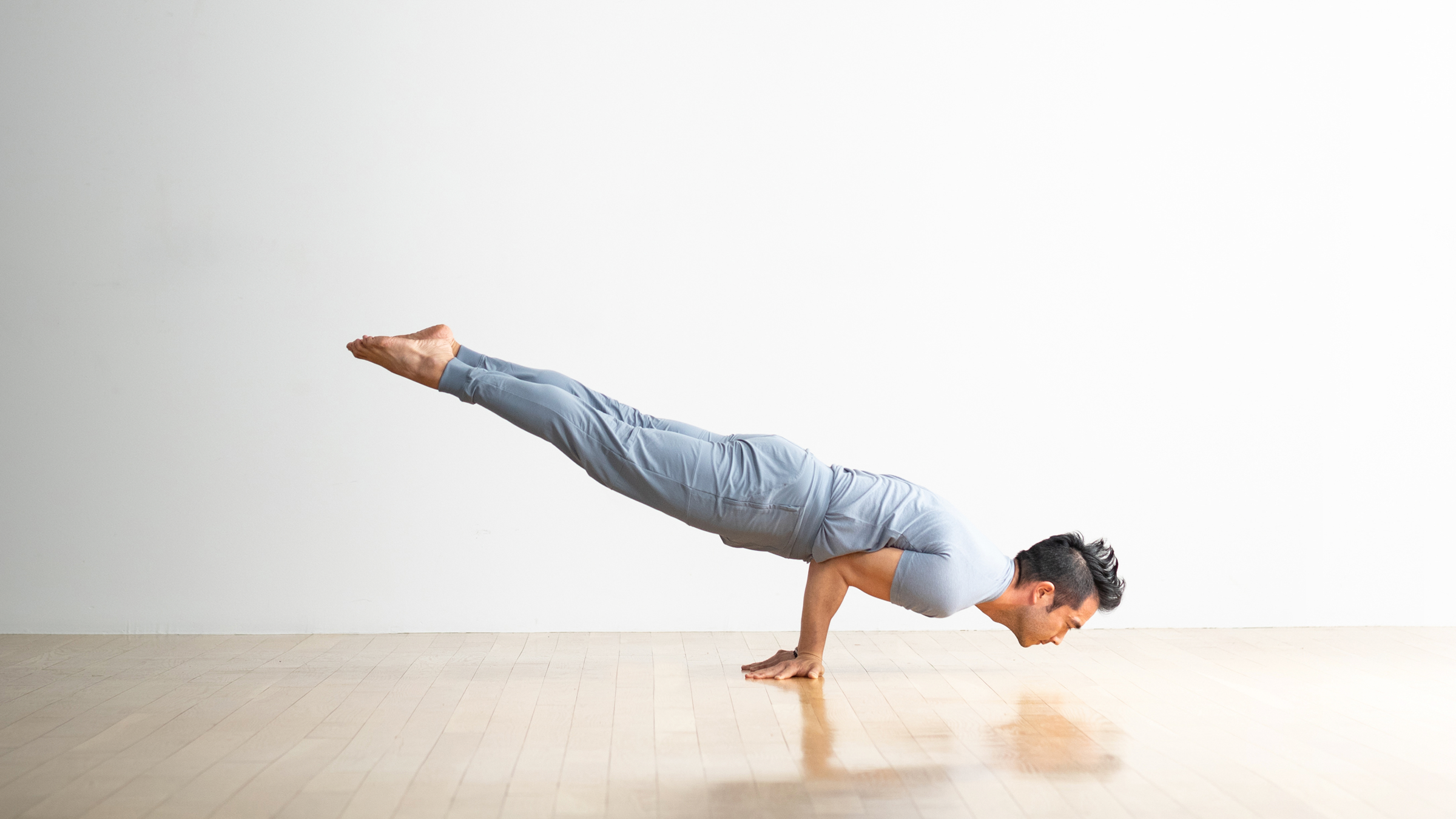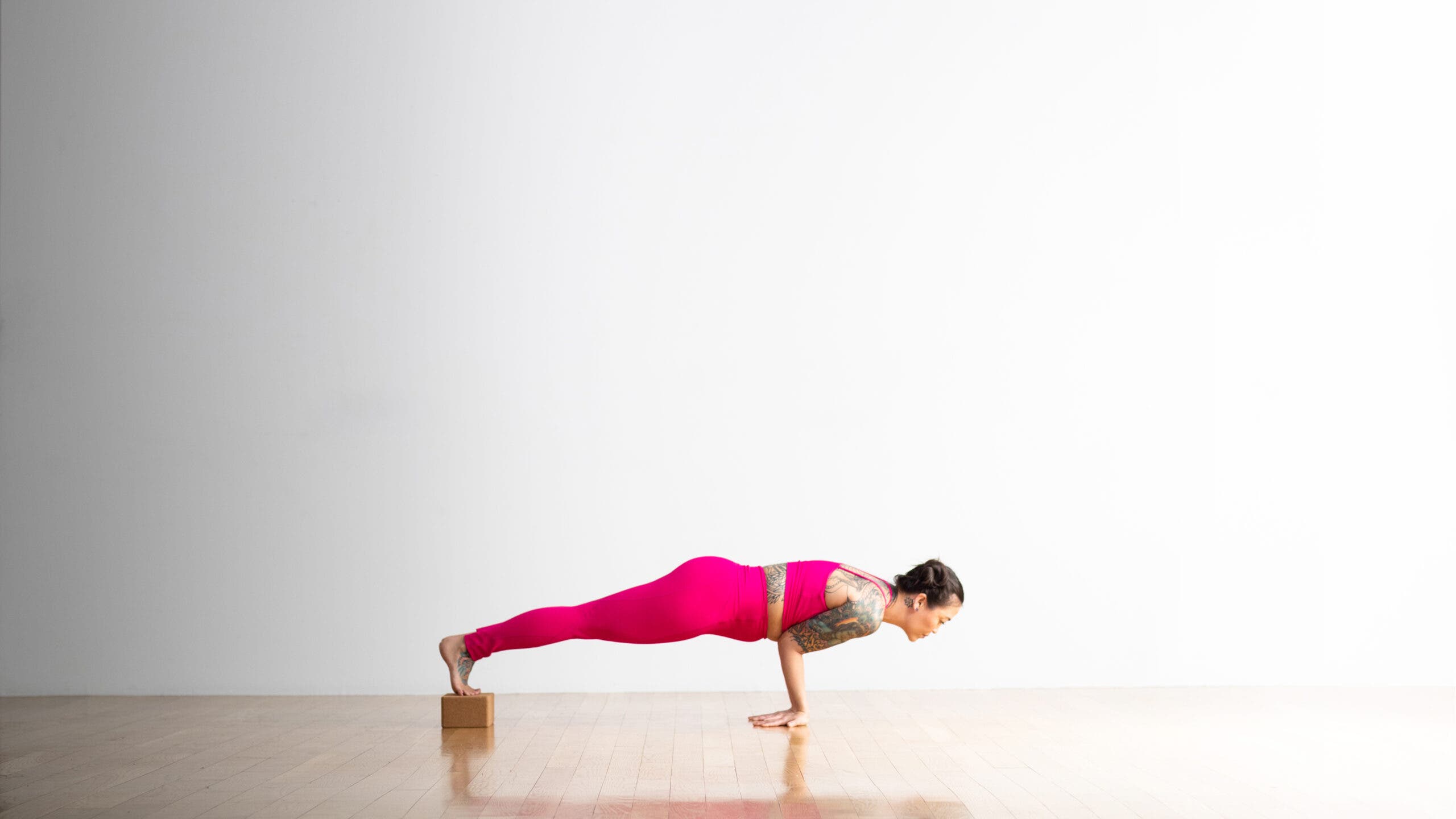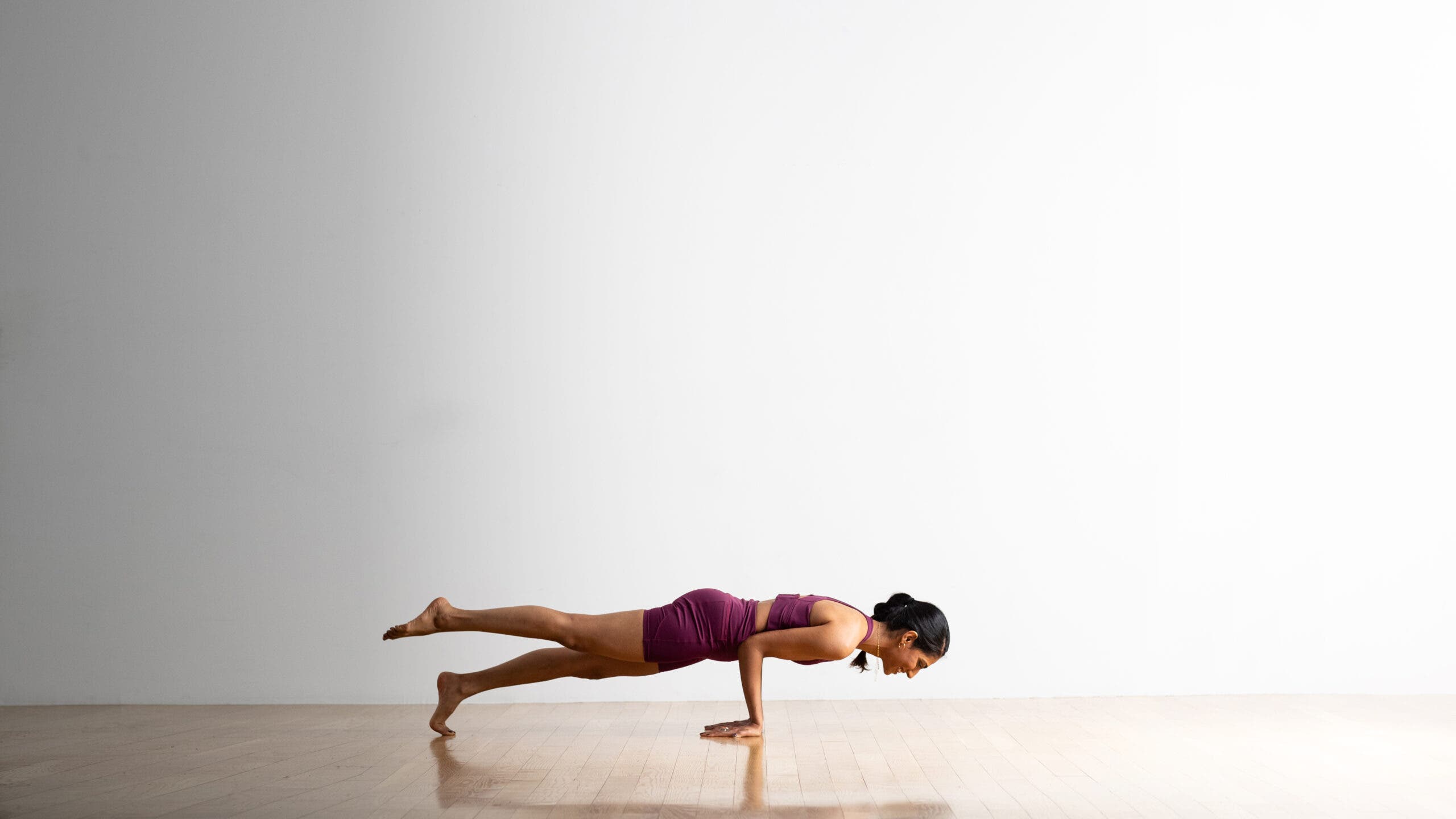Peacock Pose

(Photo: Photo by Andrew Clark; Clothing by Calia)
With its nice name and beautiful photos, Peacock Pose may seem like a fun and enjoyable asana to try. What its name and image doesn’t indicate is how challenging Mayurasana actually is. So yes, while a few people (those who have super powers) will find it easeful, most of us will have to practice for a long time before we even come close to getting into it. Peacock requires so much strength in the shoulders, arms, core and especially the wrists. It’s especially hard for women because their center of gravity—the heaviest part of the body—is in the pelvis. It’s the pelvis and hips that have to lift up off the mat—without any arm support. Men may have an easier time with this shape because their center of gravity is higher, up in the chest, and the chest is held up by their hefty upper arm muscles.
Peacock is challenging, yes, and it also ancient. Students have been trying to do it for more than 500 years! We know because it is mentioned in the classis book, The Hatha Yoga Pradipika, that dates back at to least that many years ago. There are even ancient paintings of yogis doing the pose. They once believed that Mayurasana could prevent and destroy all diseases, turn bad food into ashes and make a specific poison digestible.
There are interesting myths about that poison called kalakuta. It’s the famous drink that choked demons and gods until Lord Shiva tried it. He miraculously survived, because he’s Shiva after all, but it turned him his signature color of blue. This story is popular because Shiva was one of the earliest gods that Hindus worshipped. And this pose is among the oldest ever recorded.
The myth of kalakua may be why Hindu legends say Peacocks—which are symbolically strong, beautiful, devoted and compassionate—are able to digest snake venom! Doing the asana will not give you the magic ability to ingest dangerous substances, but it will stimulate your fiery center, the TK chakra, located in the stomach. Let your attempts at Peacock burn away poisonous thoughts, toxic people and other negative influences in your life. Even if you don’t nail it, you can reap these benefits of giving the shape a shot. Who doesn’t need to rid the mind and body from bad juju? This pose may do just the trick, at least energetically.
Sanskrit
Mayurasana (my-yer-ahs-anna)
How to
Variations

Peacock Pose on blocks
Practice the shape of Peacock Pose by elevating your feet on blocks.

Peacock Pose with alternate leg lift
Another way to prepare to do the pose with legs lifted is to raise one foot at a time. Practice gradually shifting more weight away from your feet and onto your arms.
Peacock Pose basics
Pose type:
Targets:
Benefits: Strengthens your core, chest, arms, thighs and back of the wrists (wrist extensors). Stretches the palm sides of your wrists (wrist flexors), which counteracts the effects of typing.
Beginner tips
- Try the pose standing in Mountain Pose. Bring the elbows and wrists together. Dig the elbows into the rib cage. Firm the navel in and up. Flex your toes. You’ll get the idea of the pose steady on your feet before you try it on the ground.
- Sit on your heels in Hero, squeeze the elbows together, and press them into the center of your chest near your stomach with your pinky fingers touching. For men, this may be easier. For women, your breasts may get in the way, and you may have to squeeze them together, or try to position the elbows underneath the breasts. In this position, place both hands on the ground, fingertips pointing toward toes, and then press into the palms and lean forward with the knees down. This will help you become familiar with the feeling of placing all of your weight in your hands.
- Use blocks and the wall. Do the position above, adding blocks on the lowest position underneath your hands. Position yourself leg-length away from the wall so you can lift your legs and press your feet against the wall to hold your body up.
Why we love this pose
“Learning how to balance in this posture was quite challenging for me,” says Pranidhi Varshney, a YJ contributor. “My journey with it even included a little blood from falling straight onto my chin! Postures like mayurasana have a way of keeping our egos in check, and they remind us how to fall with grace. Post-partum, this is usually one of the last postures to “come back” due to the pressure on the breasts, particularly for breastfeeding moms. So after both my babies, being able to do mayurasana again has felt like a small victory, another way of returning home to my body, or my body returning home to me.”
Teacher tips
- If students can do Lotus Pose (Padmasana), Peacock will be easier to do with Padmasana legs than it is to do with them straight.
- If students are almost in the pose but not quite, have them try this variation: Jut the chin forward and move it toward on the mat—it may touch. Bend the knees and take Bound Angle Pose in the legs, touching the feet together. The more you lean forward, the more the legs can lift up.
- For full Peacock, make sure your gaze or drishti is toward the wall in front of you instead of down toward the floor. This will help you lift your legs. Think of the pose as a teeter totter. If you lean the chest all the way forward and down, the legs will lift backward and up.
About our contributors
Teacher and model Natasha Rizopoulos is a senior teacher at Down Under Yoga in Boston, where she offers classes and leads 200- and 300-hour teacher trainings. A dedicated Ashtanga practitioner for many years, she became equally as captivated by the precision of the Iyengar system. These two traditions inform her teaching and her dynamic, anatomy-based vinyasa system Align Your Flow. For more information, visit natasharizopoulos.com.
Ray Long is an orthopedic surgeon and the founder of Bandha Yoga, a popular series of yoga anatomy books, and the Daily Bandha, which provides tips and techniques for teaching and practicing safe alignment. Ray graduated from the University of Michigan Medical School and pursued post-graduate training at Cornell University, McGill University, the University of Montreal, and the Florida Orthopedic Institute. He has studied hatha yoga for over 20 years, training extensively with B.K.S. Iyengar and other leading yoga masters, and teaches anatomy workshops at yoga studios around the country.